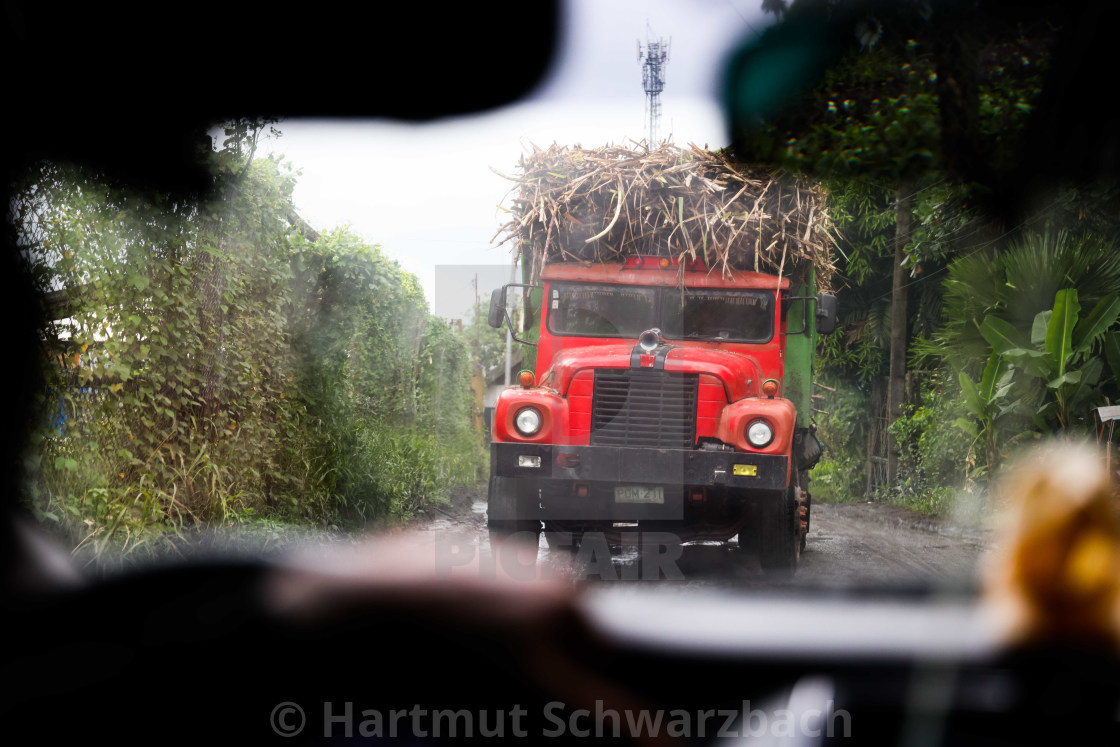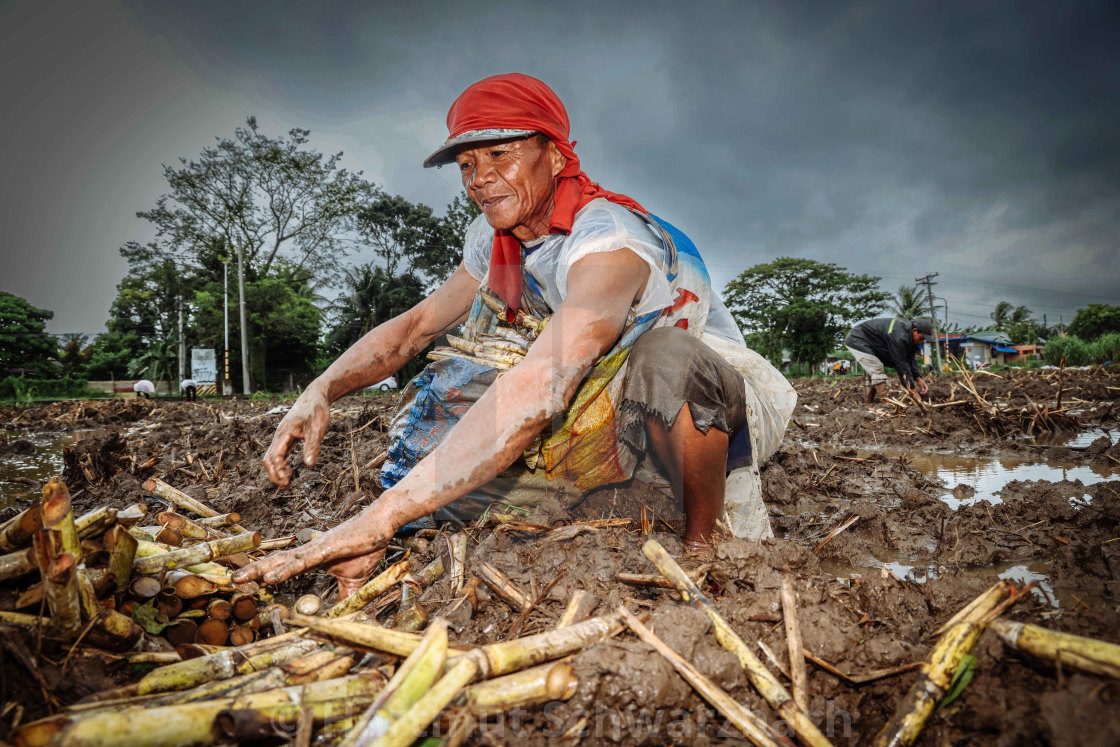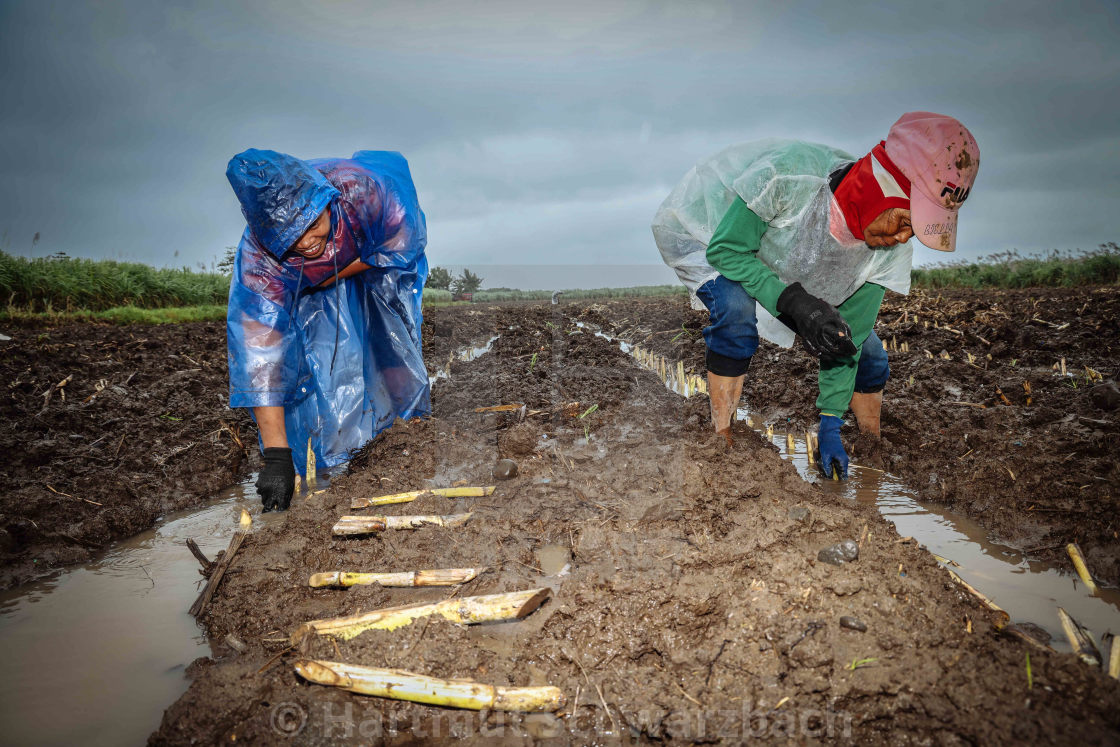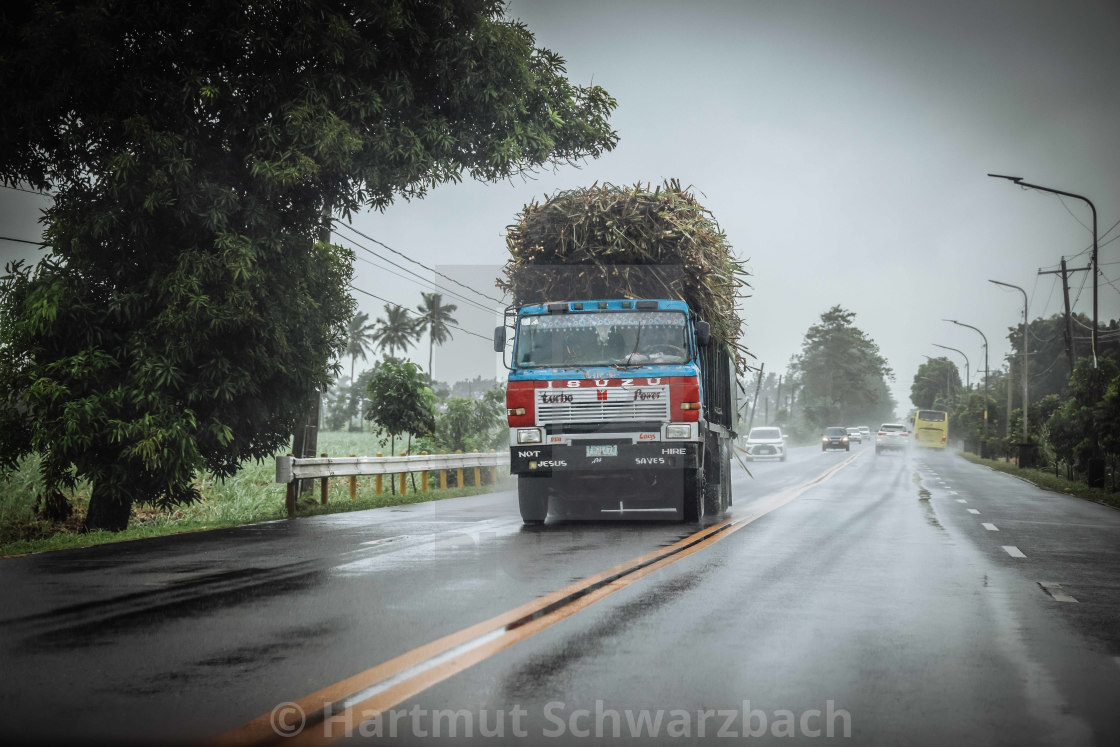Sugar Cane Workers - Negros Philippines
PHL, Negros, Western Visayas, Negros Island is the center of the sugar industry in the Philippines. The 13 sugar mills produce 54% of the country's crop. Arab traders brought sugar cane cuttings to the archipelago before colonization. The estimated 700,000 harvest workers and employees are among the poorest and lowest paid workers. Many come as so-called Sakadas Migrant Workers/harvest helpers from even poorer provinces on the neighboring islands. Since they are paid according to the Pakyaw system depending on the amount of harvest, they do not even reach the legal minimum wage for agriculture. The slave-like employment has hardly improved in the last few decades. Child labor is also still widespread, especially when cultivating new fields with seedlings, as this activity is technically very simple. Many children spend hours of the day hunched over and hunched over, skipping school. The children of plantation workers have no chance of escaping the vicious circle of dependency. There is a lack of financial resources for training and the political will of those responsible to change the situation. Their working life as field workers begins between the ages of twelve and fourteen. The sugar industry is now one of the pioneers of alternative and renewable energy sources, which include biofuels through the production of bioethanol and combined heat and power. Since the world market price of sugar is very volatile and has fallen from time to time, there have been social tensions and violent uprisings among harvest workers in the past. The sugar industry and its plantation owners also played an important role during the EDSA Revolution in 1986.

From $232.88

From $232.88

From $232.88

From $232.88

From $232.88

From $232.88

From $232.88

From $232.88

From $232.88

From $232.88

From $232.88

From $232.88

From $232.88

From $232.88

From $232.88

From $232.88

From $232.88

From $232.88

From $232.88

From $232.88